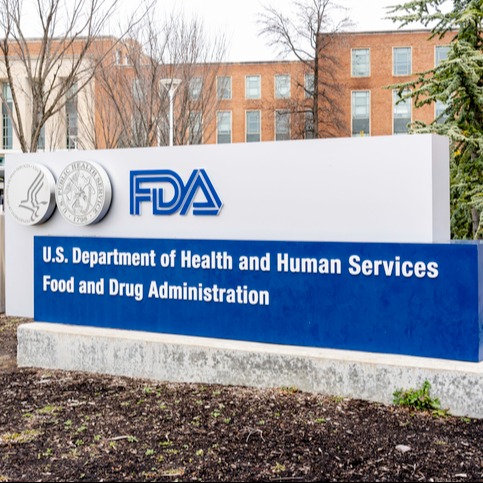
In early 2024, the mainstream media was flooded with articles about shortages of the diabetes drug, Ozempic. Elon Musk began tweeting about his weight loss on Ozempic in 2022, and the floodgates opened. Shortly after, diabetes patients and their healthcare providers began noticing pharmacies running out of Ozempic.
Tracking drug shortages is one of the responsibilities of the US Food and Drug Administration (FDA). The FDA website includes a portal where patients and healthcare providers can report shortages. This website is a valuable source that can help drug manufacturers, pharmacies, patients, and their physicians identify shortages or potential shortages, and redirect resources appropriately. Unfortunately, most people do not know that the website exists. This article aims to raise awareness and ensure patients have uninterrupted access to their prescribed medications.
Key Takeaways
FDA actively addresses drug shortages
FDA has a drug shortage reporting portal
Drug shortages stem from various factors
FDA's website has a crucial role in providing updates and guidance on drug shortages
Addressing shortages requires collaborative efforts among stakeholders.
The FDA's Role in Addressing Drug Shortages
Drug shortages pose a significant challenge to healthcare systems globally, jeopardizing patient care and public health initiatives. As the regulatory authority in the US, the FDA plays a critical role in mitigating these shortages. The FDA employs multifaceted strategies to monitor, prevent, and alleviate drug shortages by leveraging its regulatory framework and informational resources, particularly its website. This article explores the pivotal role of the FDA and its website in tackling the complex issue of drug shortages.
Understanding Drug Shortages
Drug shortages occur when the demand for a medication exceeds its supply, leading to delays or unavailability of essential treatments. Various factors contribute to this phenomenon, including manufacturing issues, regulatory challenges, market dynamics, and disruptions in the supply chain. Consequently, patients may face difficulties accessing vital medications, compromising health outcomes, and increasing healthcare costs.
The FDA's Regulatory Oversight
As the primary regulatory agency responsible for ensuring drug safety, efficacy, and quality in the US, the FDA plays a critical role in preventing and addressing drug shortages. The FDA monitors drug manufacturing facilities through its regulatory oversight, reviews new drug applications, and enforces compliance with Good Manufacturing Practices. By maintaining stringent standards, the FDA aims to minimize disruptions in the drug supply chain and prevent potential shortages.
The FDA's website serves as a central hub for disseminating information on drug shortages, providing healthcare professionals, manufacturers, and the public with timely updates and guidance. The website offers a comprehensive database of current and resolved shortages, including information on affected drugs, the underlying causes, and potential mitigation strategies. By enhancing transparency and communication, the FDA facilitates proactive responses to drug shortages, enabling stakeholders to collaborate effectively in addressing supply challenges.
Preventive Measures and Risk Mitigation
In addition to monitoring and reporting shortages, the FDA implements proactive measures to prevent and mitigate supply disruptions. The agency collaborates with manufacturers to identify and address manufacturing issues promptly, ensuring compliance with regulatory requirements and promoting a stable supply of medications. Through initiatives such as the Drug Shortages Task Force and the Strategic Plan for Preventing and Mitigating Drug Shortages, the FDA identifies root causes, streamlines regulatory processes, and enhances coordination across the healthcare industry.
Moreover, the FDA encourages manufacturers to implement risk management strategies, such as inventory management, redundancy in manufacturing capabilities, and alternative sourcing of raw materials. By diversifying supply chains and adopting robust contingency plans, manufacturers can minimize the impact of potential disruptions and maintain consistent availability of essential medications.
The Role of Informational Resources
FDA's online platform is central to its efforts in addressing drug shortages, and it serves as a vital resource for stakeholders seeking information and guidance. The FDA website features dedicated sections on drug shortages, offering a wealth of resources, including:
1. Drug Shortages Database: A searchable database providing real-time updates on current shortages, including detailed information on affected products, their availability status, and alternative treatment options.
2. Guidance Documents: The FDA outlines strategies for manufacturers, healthcare providers, and other stakeholders to prevent, mitigate, and manage drug shortages effectively.
3. Regulatory Updates: The website disseminates regulatory updates and policy announcements about drug shortages, informing stakeholders of regulation changes, guidance, and enforcement priorities.
4. Communication Channels: The FDA provides channels for stakeholders to report drug shortages, submit inquiries, and seek assistance in resolving supply challenges. These communication channels facilitate collaboration and information exchange among manufacturers, healthcare providers, and regulatory authorities.
Collaborative Approaches and Public Engagement
Addressing drug shortages requires a collaborative effort involving government agencies, industry stakeholders, healthcare providers, and patient advocacy groups. Recognizing the importance of collaboration, the FDA actively engages with these stakeholders to develop and implement comprehensive solutions to mitigate supply disruptions.
The FDA facilitates dialogue through public meetings, workshops, and advisory committees, providing opportunities for stakeholders to share insights, best practices, and innovative approaches to address drug shortages. By fostering an open and inclusive exchange of ideas, the FDA promotes collective problem-solving and encourages stakeholders to work together toward sustainable solutions.
Furthermore, the FDA collaborates with international regulatory counterparts and industry associations to align standards, harmonize regulations, and enhance global cooperation in addressing drug shortages. By leveraging collective expertise and resources, the FDA seeks to strengthen the resilience of the international drug supply chain and mitigate the impact of shortages on patient care worldwide.
Conclusion
Drug shortages pose a significant challenge to healthcare systems, threatening patient safety and public health outcomes. The FDA is pivotal in addressing these shortages through its regulatory oversight, proactive measures, and collaborative efforts with stakeholders. Central to these efforts is the FDA's website, which serves as a comprehensive resource for information, guidance, and communication on drug shortages.
By leveraging its regulatory authority and informational resources, the FDA endeavors to prevent, mitigate, and resolve drug shortages, ensuring patients have timely access to essential medications. Moving forward, sustained collaboration and innovation will be necessary to address the root causes of drug shortages and promote a more resilient and reliable drug supply chain for the benefit of patients worldwide.
Rely on PlanetDrugsDirect.com to Buy Prescription Discount Drugs Online
As a trusted prescription referral service, we offer important benefits whenever you order online. Each of our partner pharmacies and/or government-approved dispensaries is committed to providing the best experience possible of any online prescription referral service on the internet. We offer:
Low prices
Quick turn-around times
Generic and brand-name medications
Unparalleled customer service
Sources
U.S. Food and Drug Administration. (n.d.). Drug shortages. FDA. Retrieved April 3, 2024, from https://www.fda.gov/drugs/drug-safety-and-availability/drug-shortages#
Ventola, C. L. (2011). The drug shortage crisis in the United States: Causes, impact, and management strategies. Pharmacy and Therapeutics, 36(11), 740–757. Retrieved from https://www.ncbi.nlm.nih.gov/pmc/articles/PMC3278171/
Kaakeh, R., Sweet, B. V., Reilly, C., Bush, C., DeLoach, S., Higgins, B., ... Stevenson, J. G. (2011). Impact of drug shortages on U.S. health systems. JAMA, 306(16), 1703–1704. https://doi.org/10.1001/jama.2011.1430
Fox, E. R., Birt, A., James, K. B., Kokko, H., Salverson, S., & Soflin, D. L. (2013). ASHP guidelines on managing drug product shortages in hospitals and health systems. American Journal of Health-System Pharmacy, 70(15), 1363–1372. https://doi.org/10.2146/ajhp130210
U.S. Food and Drug Administration. (n.d.). DSM Submission. FDA. Retrieved April 3, 2024, from https://cdernextgenportal.fda.gov/publicportal/s/dsm-submission
 Medically reviewed by
Medically reviewed by 





